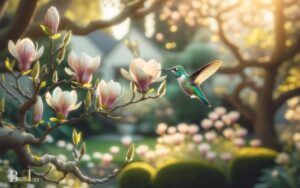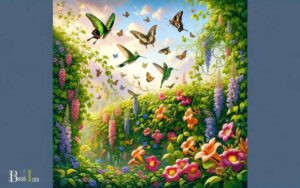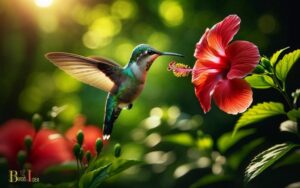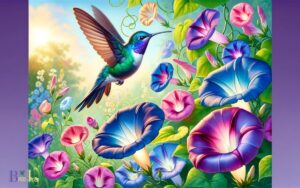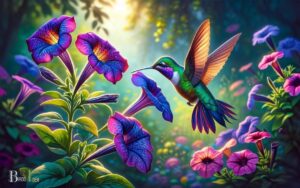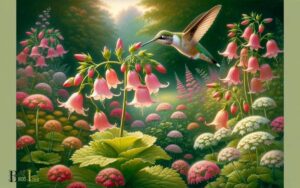Does Bee Balm Attract Hummingbirds? Yes!
Yes, bee balm, also known as Monarda, is highly effective at attracting hummingbirds. This perennial plant, with its bright, tubular flowers, is a favorite among these tiny, nectar-loving birds.
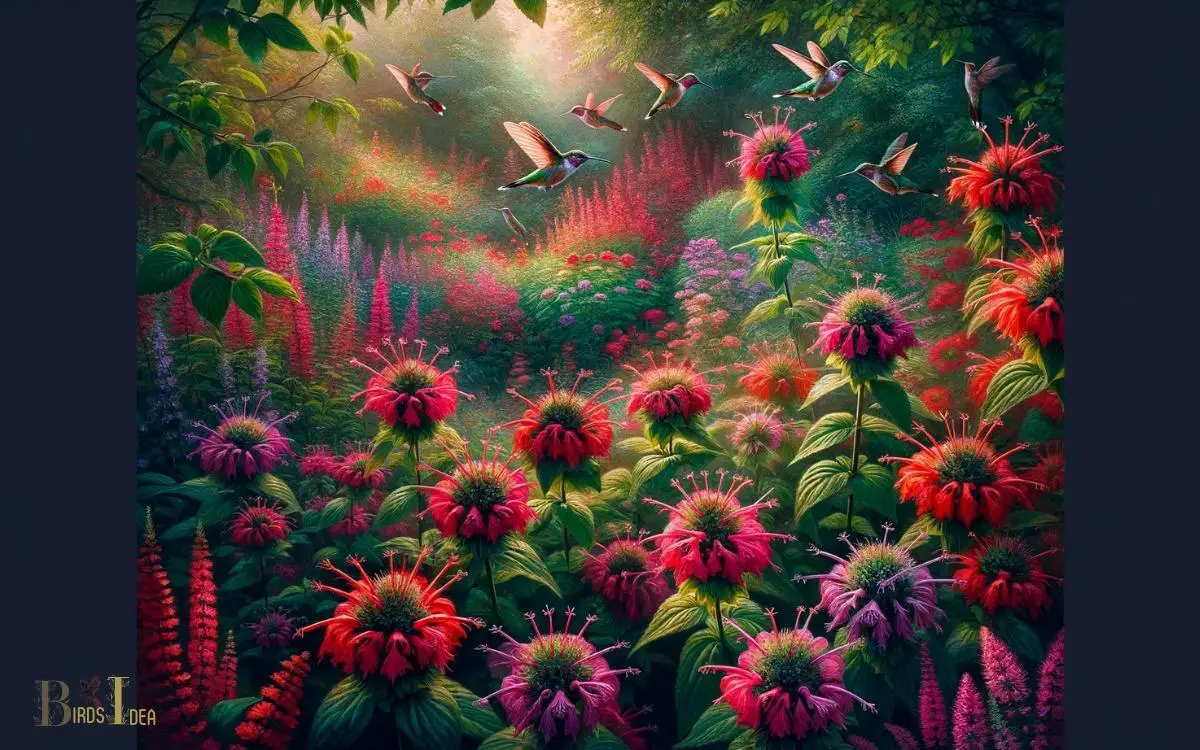
Key Takeaway
The Characteristics of Bee Balm
Bee balm, known for its vibrant colors and aromatic foliage, attracts hummingbirds with its nectar-rich flowers.
The plant, also called Monarda, comes in various shades, such as red, pink, and purple, adding a burst of color to any garden.
Its fragrant leaves and stems are reminiscent of the scent of oregano and mint. Bee balm typically blooms from mid to late summer, providing a long-lasting food source for hummingbirds during their active period.
It thrives in full sun to partial shade and well-drained soil, making it a versatile and low-maintenance addition to any garden.
With its attractive appearance and ability to draw in hummingbirds, bee balm is an excellent choice for both experienced and novice gardeners looking to create a bird-friendly environment.
Hummingbirds Attraction to Nectar
Hummingbirds are known for their attraction to nectar, which is a vital part of their diet. Understanding the appeal of Bee Balm nectar to hummingbirds sheds light on their nectar preferences and foraging behavior.
Exploring this connection provides valuable insights into the role that Bee Balm plays in attracting and sustaining hummingbirds.
Bee Balm Nectar Appeal
It is known that nectar from certain flowers can be particularly appealing to hummingbirds. Bee balm, in particular, has several characteristics that make its nectar highly attractive to these tiny birds:
- Abundant Nectar: Bee balm produces ample amounts of nectar, providing a rich food source for hummingbirds.
- High Sugar Content: The nectar of bee balm is high in sucrose, a preferred sugar for hummingbirds, providing them with a quick energy boost.
- Long Blooming Period: Bee balm flowers have a long blooming period, offering a sustained nectar source for hummingbirds throughout the season.
- Brightly Colored Flowers: The vibrant red, pink, or purple flowers of bee balm are easily visible to hummingbirds, attracting them to the nectar-filled blooms.
These factors combined make bee balm a highly appealing nectar source for hummingbirds.
Hummingbirds and Nectar Preference
Nectar composition plays a crucial role in determining hummingbirds’ attraction to certain flowers. Hummingbirds are primarily attracted to nectar that is rich in sucrose, which provides them with the necessary energy for their high metabolism.
The table below summarizes the preferences of different hummingbird species for nectar with varying sucrose concentrations.
| Hummingbird Species | Preferred Sucrose Concentration |
|---|---|
| Ruby-throated Hummingbird | 20-25% |
| Anna’s Hummingbird | 25-30% |
| Rufous Hummingbird | 30-35% |
| Black-chinned Hummingbird | 15-20% |
Understanding the preferred nectar composition of different hummingbird species can help in choosing the right flowers to attract and support these beautiful creatures in your garden.
Bee Balm Flowering Period
During the summer months, bee balm typically begins its vibrant flowering period, attracting not only hummingbirds but also other pollinators to the garden.
This flowering period is a sight to behold, with the bee balm plants bursting into a stunning display of color and fragrance.
The garden becomes a hub of activity as various pollinators flock to the bee balm flowers, creating a lively and dynamic environment.
The flowering period extends for several weeks, offering a prolonged opportunity to observe the beauty and interactions within the garden.
The bee balm flowers sway gently in the summer breeze, creating a mesmerizing dance of colors and scents.
The vibrant blooms stand out against the backdrop of lush green foliage, creating a picturesque scene in the garden.
How Hummingbirds Interact With Bee Balm?
Hummingbirds are known to enthusiastically visit bee balm flowers to feed on their nectar.
- The tubular shape of the bee balm’s blossoms is perfectly suited for the long, slender beaks of hummingbirds.
- As they hover in front of the flower, their specialized beaks allow them to reach deep into the flower to access the nectar.
- Hummingbirds are also attracted to the vibrant red, pink, or purple colors of bee balm, as these colors are easily visible to them.
- While feeding, hummingbirds inadvertently transfer pollen from one flower to another, aiding in the plant’s reproduction.
This interaction benefits both the hummingbirds, providing them with a rich source of nectar, and the bee balm, facilitating its pollination process.
Understanding how hummingbirds interact with bee balm sheds light on their attraction to this particular plant.
Other Factors Affecting Hummingbird Attraction
Other factors affecting hummingbird attraction include the availability of alternative food sources and the presence of safe perching spots.
- Hummingbirds are attracted to areas that offer a variety of nectar-producing flowers, as well as sugar water feeders, which provide them with the energy they need.
- Additionally, having safe perching spots allows hummingbirds to rest and observe their surroundings, making them more likely to frequent a particular area.
- Factors such as the presence of natural predators and disturbances from pets or humans can discourage hummingbirds from visiting a specific location.
- Finally, the overall landscaping and environment play a significant role in attracting hummingbirds, with well-maintained gardens and natural habitats being more appealing to these delicate creatures.
Tips for Attracting Hummingbirds to Your Garden
Attracting hummingbirds to your garden can be enhanced by implementing specific gardening techniques that cater to their needs, such as providing a variety of nectar-producing flowers and creating safe perching spots for them to rest and observe their surroundings.
- To attract hummingbirds, consider planting native flowers like bee balm, trumpet vine, and salvia, as they provide the high-energy nectar that hummingbirds need.
- Additionally, incorporating a diverse array of flower shapes and colors can appeal to hummingbirds’ visual and foraging preferences. It’s essential to maintain a pesticide-free garden to ensure the safety of these tiny birds.
- Providing a water source, such as a shallow bird bath or a mister, can also attract hummingbirds for bathing and drinking.
- Lastly, hanging hummingbird feeders can supplement their nectar intake, especially during periods of low flower availability.
Conclusion
Bee balm does attract hummingbirds with its vibrant and nectar-rich flowers. Like a magnet drawing in metal, the bee balm’s bright blooms and sweet nectar entice hummingbirds to visit and feed in gardens.
With the right conditions and care, the bee balm can create a beautiful and lively haven for these delightful birds.

